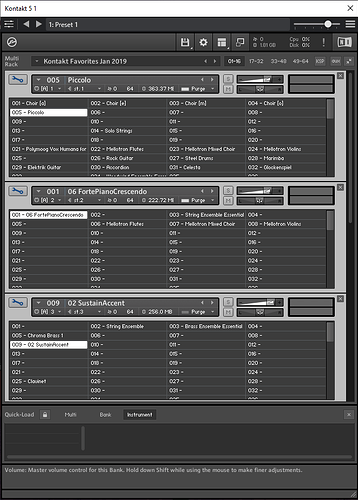Hi to everyone.
New enthusiast user here, quite satisfied after two weeks of programming and two live gigs.
I am not a professional, I just play for fun.
But I like to do it at my best, of course.
Based in Turin, Italy.
My history started when I was 3 years old, with typical Christmas gift of those years: a toy organ from Bontempi.
Every adult understood that music was my thing, nothing changed since then.
I got soon some two manuals organs (home Farfisa models, cheap but not bad)
Then when I was 14, the first synthesizer; a glorious Korg MS20, still on my desk today after 42 years!
I played in some high school bands, one of them was a real wonder.
Two of us turned to pro, and after many years of hard work they are currently in best italian rock band.
I decided to study engineering and stopped rehearsing with them when I was 18.(how fool!)
I was sure to be not talented enough, still think that way
After many years of fun with amateur bands I recently got some gigs with a benefit setup where some pro musicians play regularly; it is for me a huge honor and a wonderful way to spend free time.
I am today 55 yo, fan of classic rock, owning some axes like Korg M1, Korg Kronos, Yamaha Montage.
But working in day time as sales manager for a big chemical company.
My degree in electronic engineering is more used on stage that in office.
I fell in love with VSTs many years ago: this way I had chances to use cheap software instead of hugely expensive instruments.
B4 from NativeInstruments and MiniV from Arturia gave me chances to get Floyd and Genesis sounds that I loved, quite difficult to copy with polyphonic synths of that age like M1
Recently I had been working with Reaper as host and some MIDI controllers like Arturia Keylab.
I was looking for flexibility and speed for live use: hard job.
Only Cantabile Performer solved everything immediately (thanks Brad!).
One gig last week: everything perfect.
But another gig next Friday with another band, and different hardware setup
In one case I was using Keylab, a Native Komplete Audio6 as audio board for my laptop.
In the other setup I was using Montage and its internal audio board.
Simple shows: classic rock from 70s, not a complex task for Cantabile.
One setlist of 25 songs, some states, some racks (Kontakt, Hammond B3X, Arturia Mini)
Main issue: when I switched from band one to band two, Cantabile did not find Komplete Audio 6 anymore…
On that event, audio engine did not work (understandable, board was not connected…)
As soon as I chose the right new engine, MOntage ASIO board, I found my setlist “corrupted”.
Songs were there, but Kontakt rack was lost.
I had no time to check fully, because it was only a rehearsal, show will be next Friday.
While playing I reloaded manually a new Kontakt rack and closed rehearsal with 90% of the tricks.
I will work one night of this week to check fully the old rack, to see why it was completely blank, while some days before it had 5 instruments loaded.
Anyone well experienced who could suggest some explanation?
Thanks again!!!
